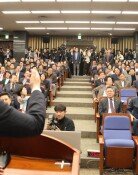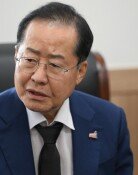K-battery’s ‘first crisis’ difficult to overcome without government support
K-battery’s ‘first crisis’ difficult to overcome without government support
Posted July. 18, 2024 07:37,
Updated July. 18, 2024 07:37
The 2010s marked the genesis of the electric vehicle (EV) market. The Nissan Leaf, the world's first mass-produced electric vehicle released in 2010, entered the Korean market in 2014, but its driving range after a single charge was only 132 kilometers. This led to both expectations and doubts about electric vehicles. Consequently, Japan's Toyota focused on hybrid vehicles (HEV), and Germany's Mercedes-Benz prioritized plug-in hybrid vehicles (PHEV).
However, the spread of electric vehicles was faster than expected. Tesla’s ‘Model S’ broke the perception that ‘electric cars = small cars’ and opened the door to the luxury electric car market. Governments worldwide rushed to provide subsidies in the name of environmental protection, and the charging infrastructure expanded. The recently introduced Kia ‘EV3’ technology has advanced so that the maximum driving range after a single charge has increased to 501 kilometers.
This year, the electric vehicle market faced a chasm, a temporary slowdown in demand. Despite subsidies, electric vehicles remain more expensive than equivalent internal combustion engine vehicles. Early adopters have already purchased them, but those questioning their effectiveness compared to internal combustion engine vehicles are hesitating. The sight of electric cars stopped on the roadside due to battery discharge during a cold wave in the United States last winter also had an impact. As the market slows down, the domestic battery industry is expected to see its sales fall for the first time compared to the previous year.
In the long term, many experts still believe that electric vehicles are the ‘planned future.’ The European Union, the United Kingdom, and Canada plan to ban the sale of new internal combustion engine vehicles from 2035 to reduce carbon emissions. The era of self-driving cars will require thousands of semiconductors to process data, consuming enormous amounts of power, thus accelerating the transition to electric vehicles. As technology advances, battery performance will improve.
Automobile industry predictions indicate that this chasm may last until 2026. For domestic battery companies, overcoming this hurdle is urgent. Competition from other countries is fierce. In the global market excluding China, the market share of the three K-battery companies—LG Energy Solution, Samsung SDI, and SK On—collapsed to around 50% last year and fell to 46.8% from January to May this year (SNE Research). Thanks to a robust domestic market and cheap raw materials, the market share of Chinese companies rose rapidly to exceed 30%.
Unlike the semiconductor industry, which has experienced cycles of boom and bust for decades, the battery industry, with its shorter history, is facing its first crisis. The three battery companies are challenging the low-cost lithium iron phosphate (LFP) market, dominated by Chinese companies, while simultaneously developing all-solid-state and semi-solid-state batteries to widen the technology gap.
From Wednesday to Friday last week, The Dong-A Ilbo examined the battery support measures of Korea, the United States, and the EU through the ‘Challenged K-Battery’ series. When comparing the financial support available for companies building a battery factory with an investment of 1 trillion won, it was over 3 trillion won over five years in the United States, 400 billion won in the EU, and only 120 billion won in Korea. Support measures for high-level talent have fallen behind China. Future leadership is likely to be lost to competing countries that are rapidly increasing their competitiveness in price, technology, and talent. Reasonable government support has now become a necessity rather than an option.
Headline News
- Internal rebellion investigation transferred to Public Prosecutor's Office
- Gov’t to approve Yongin Semiconductor National Industrial Complex
- US conservatives rally around Trump’s third term
- Lee Hyo-song named youngest Rookie of the Year in JLPGA history
- Controversy escalates over the appointment of Constitutional Court justices







